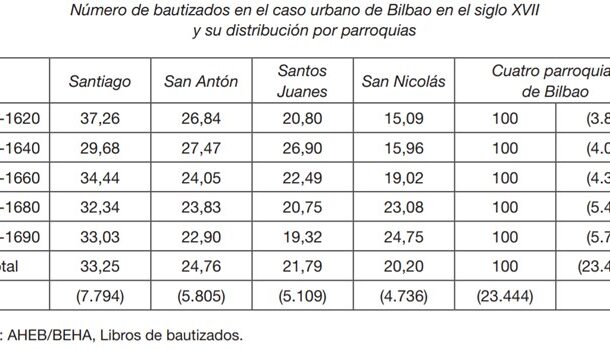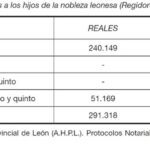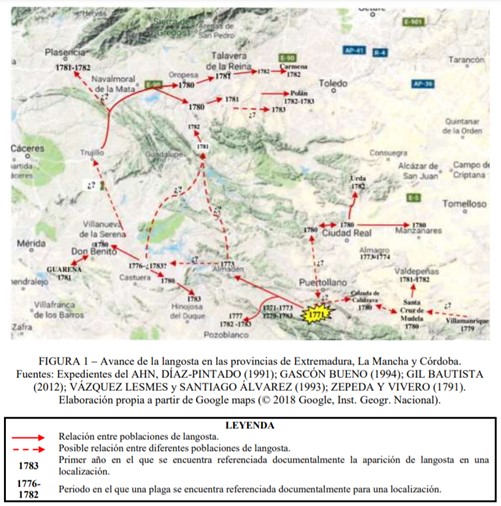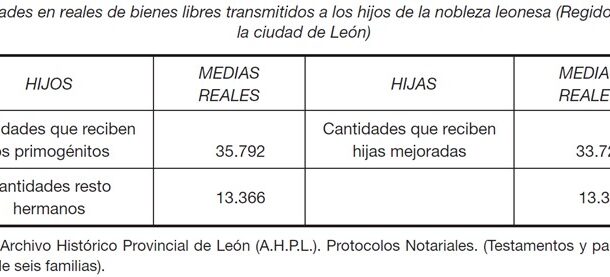
The transmission of property through inheritance was one of the most effective family policies for laying the foundations of social reproduction. The Castilian inheritance system provided the testator with the flexibility to distribute his property equally or to accumulate in one individual a large part of the estate to be inherited. However, the form of inheritance was closely related to the amount of assets at the testator’s disposal. In the case of the noble rulers of the city of León, the sons received 82.4% of the total amounts transmitted by the legitimate; the remaining 17.6% was destined to improvements. Within the improvements, the Quinto de mejora and the Tercio de libre disposición went to a single heir. Although with modest amounts, the Leonese nobility tended to prioritise the unequal transmission of the property, favouring a first-born to avoid its atomisation. The present resource is a sample of the social practices and the differentiated mentality, with a material basis, which was rooted in the different social profiles.
Collection: Statistics
Project: 3. Rural world and urban world in the formation of the European identity., 4. Family, daily life and social inequality in Europe.
Chronology: XVIII, XIX
Scope: Secondary Education, Baccalaureate, University
Link: https://www.adeh.org/revista/2013,%202/Juan%20M%20Bartolome.pdf
Resource type: Statistics
Format: Table
Source: Bartolomé Bartolomé, J. M. (2013). "El acceso de los jóvenes de la nobleza a la herencia: el ejemplo de las familias de regidores leoneses (1700-1850)", en, Revista de Demografía Histórica, XXXI, 2, p. 33.
Language: Spanish
Date: 2013
Owner: Pablo Ballesta Fernández (Modernalia)
Copyright: ©Revista de Demografía Histórica ©Juan Manuel Bartolomé Bartolomé
Abstract: Table reflecting the property transfer preferences of the Leonese nobility
Image
Tags








